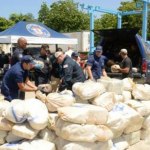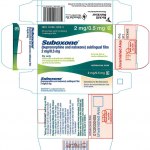This study appeared last month in the online Journal Nature. In my view, it’s rightly being referred to as a landmark in our understanding of PTSD.
The study itself reminded me of Vaillant’s research, that culminated in the seminal 1980 book, The Natural History of Alcoholism. That also helped redefine our understanding of (and approach to) a chronic disorder that affects millions of people around the world.
As for PTSD, about 1 in 5 separated military veterans will experience its symptoms — a staggeringly large population when you consider the number who serve. I wouldn’t be surprised if the percentages are similar or even greater among so-called First Responders.
A key question for the researchers: “Does PTSD ordinarily resolve, persist, or worsen?”
The short answer: All three, depending, but for a great many, PTSD symptoms should not be viewed as a stress reaction that can be expected to improve over time, largely on its own. More often than not, it presents as a chronic disorder, with its own course, treatments, and prognosis — the same conclusion we eventually had to draw about alcoholism.
That client with PTSD, sitting in your office, learning to manage PTSD symptoms? Based on the evidence, that client is at risk for years of further issues. Surprisingly, for the First Responders at least, research found that “…PTSD symptoms tended to peak around a decade after 9/11– significantly later than delayed-onset patterns reported in previous trauma studies.”
And for many, our best current treatments will prove only minimally effective, or in some cases, not effective at all. They’ll continue to suffer.
A sad reality: nearly as many sufferers will experience worsening symptoms over time as those who improve. In those cases, time isn’t much of a healer. We should adjust our prognoses accordingly.
As a curious aside, it does appear that first responders at mass shootings are at greater risk for PTSD than those who respond to natural disasters such as fires, floods, and earthquakes.
As for the most severe cases: “the top 10% of responders who experienced worsening symptoms over the long term accounted for the majority of mental health costs.”
That’s comparable to alcoholism, in that a minority of patients, the most severe cases, are responsible for a disproportionate share of associated health costs.
For those patients, we might consider adopting a modified harm reduction strategy, wherein their medical and psychological needs are met in an outpatient or subacute residential setting, rather than simply cycling repeatedly through the acute hospital or medical clinic.
To me, all this suggests a crying need for newer, better, more effective treatments. In another post, we look at one new (pharmacological) tool for relieving PTSD symptoms. And at the same time, at a surprisingly effective alternative psychotherapy for another wildly common malady– chronic pain.













